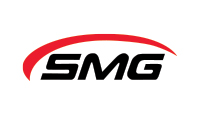The EPA, the US Department of Agriculture (USDA) and the White House Council on Environmental Quality recently recognized a market-based nutrient trading program run by the Commonwealth of Virginia. The nutrient trading program works to offset increases in phosphorus loads by creating a market supply and demand for land capture and storage of nutrients. For example, the credits generated by Virginia farmers can be purchased to cover phosphorus reduction requirements for road construction projects. Nutrient trading provides economic incentives for farmers, such as cost savings, new income, and employment opportunities, in addition to environmental benefits, such as air quality improvements and enhanced wildlife habitat.
“Virginia’s nutrient trading program is a strong example of how to create economic opportunity and new income for rural America while protecting and improving local waterways and the Chesapeake Bay,” said EPA Administrator Gina McCarthy. “The program is a win for the environment and our economy and we encourage states to look at Virginia as a model and a resource as they adopt similar programs.”
Is this program a preview of coming attractions for Kentucky? It is easy to imagine the answer is yes. The Kentucky Department for Environmental Protection (DEP) is participating in the Ohio River Basin Pilot Water Quality Trading Program, the purpose of which to evaluate the feasibility of intrastate and interstate water quality trading. Also, it is no secret that both EPA and USDA have long supported the concept of market-based approaches to improve water quality. The EPA says in its press release that it “is currently developing additional resources for states across the country to pursue similar programs”.
